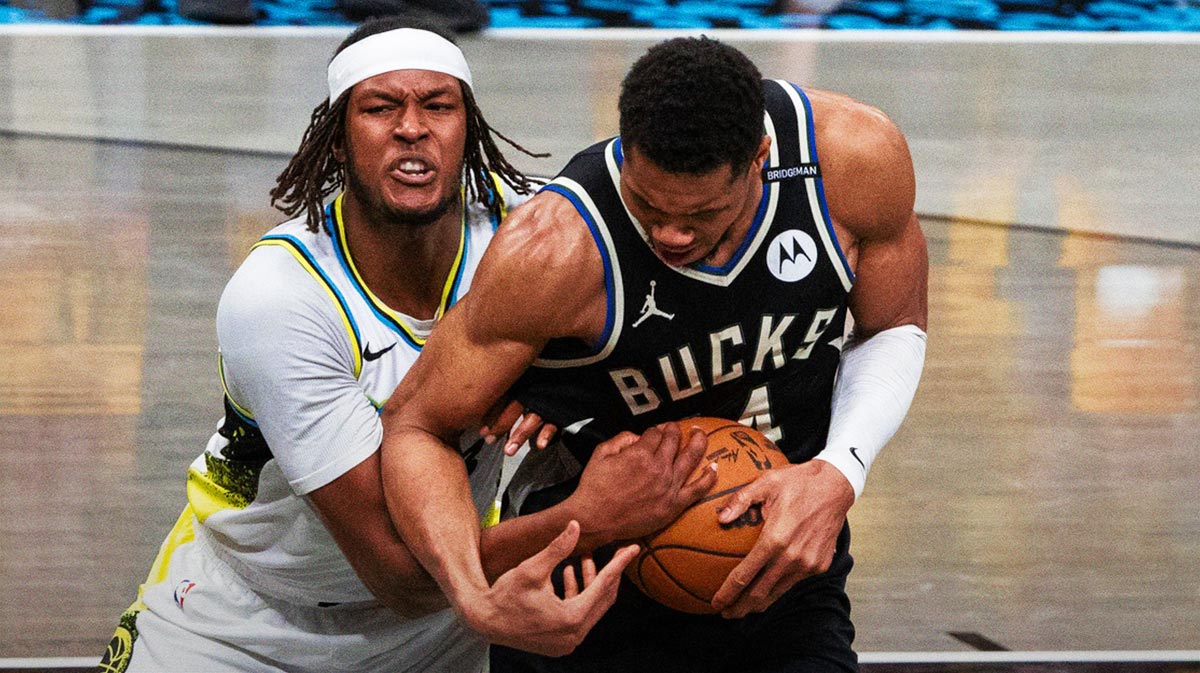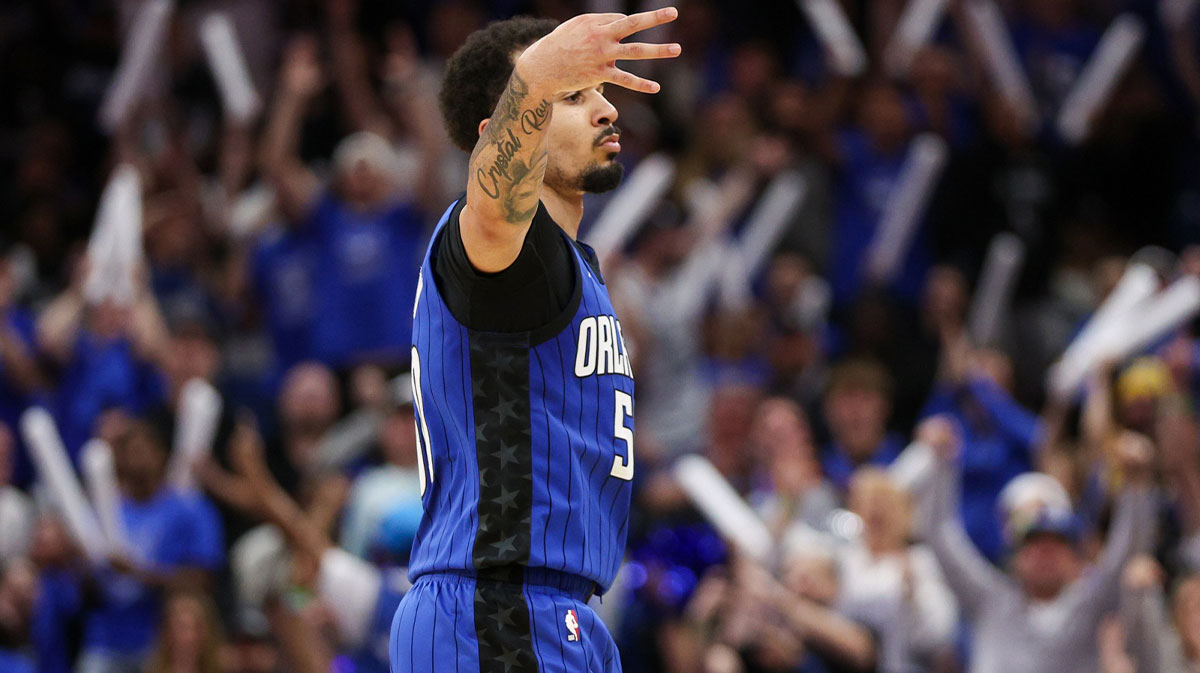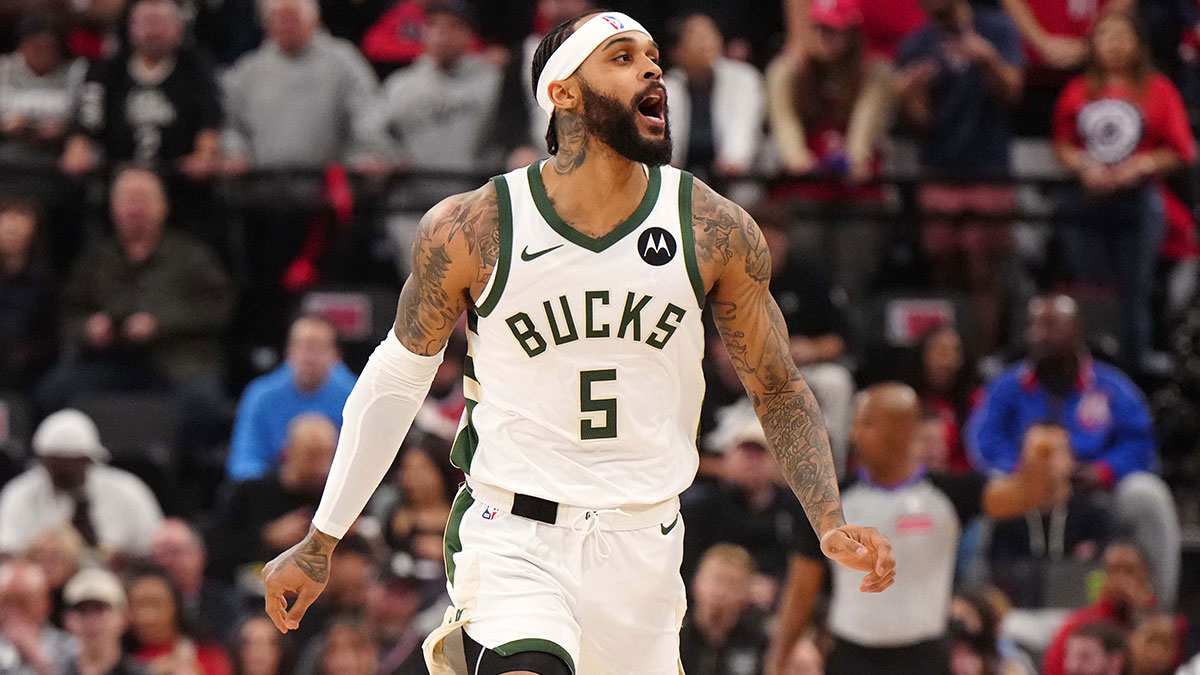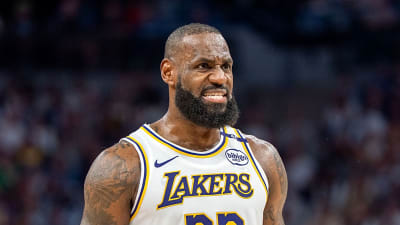
The Milwaukee Bucks entered the 2025 NBA offseason as a team with a difficult decision to make. With Damian Lillard having suffered a torn Achilles in the first round of the playoffs, the Bucks’ hopes of contending for the next few seasons drastically diminished — potentially leading to a trade request from Giannis Antetokounmpo, their franchise cornerstone and two-time MVP.
However, the Bucks front office simply was not about to give up without a fight. They were one of the most active teams in free agency, most notably making the bombshell decision to waive and stretch Lillard’s contract to open up the space to sign Myles Turner from their rival, the Indiana Pacers.
Here we are assessing all the moves of note that the Bucks made to try and improve the roster around Antetokounmpo to convince him to stay in the Cream City for the foreseeable future.
Bucks risk it all for Myles Turner

Not too many could have foreseen that the Bucks would eat so much dead money on the Lillard contract so they could sign Turner to a four-year, $107 million contract. Now, the Bucks had a need to sign a new starting center after the departure of Brook Lopez for the Los Angeles Clippers. But did they really have to risk it all for Turner?
Turner, of course, does most of the things that Lopez does. Since 2015, Turner ranks second in total threes and blocks among centers, only trailing Lopez. The Bucks front office knows that a stretch center who can protect the rim is the perfect fit alongside Antetokounmpo, and Turner’s track record provides that safety blanket that Milwaukee can at least stay the course and stick to a system that’s been working for them.
Bucks GM Jon Horst called the Turner signing opportunistic. Perhaps that is the case. But eating over $22.5 million in dead cap for the next five seasons is such a painful consequence of seizing that opportunity. In essence, the Bucks are paying Turner over $47 million a season.
This signing at least keeps the Bucks a playoff-caliber team in the East. But as far as keeping Antetokounmpo goes, it’s not quite clear if acquiring Turner is enough. Turner is a good piece with a winning history, but he’s not the piece that takes a good team to a great one. And at the cost the Bucks signed him for, perhaps they would have been better off cobbling together a cheaper yet workable center rotation instead of doing this for Turner, who is not a needle-mover.
Grade: C
Milwaukee acquires new starting PG in Cole Anthony

The Bucks’ starting point guard position will be up for grabs in training camp, but Cole Anthony is a good bet to start for the Bucks after signing with them following a buyout agreement with the Memphis Grizzlies. Anthony fell out favor with the Orlando Magic, and was utilized as a trade chip in the Desmond Bane deal before landing with the Grizzlies and then the Bucks.
Anthony may be a smaller point guard (he stands at 6’2″), but he is a fighter on the defensive end. He is a pest, wanting to disrupt opposing ballhandlers. He’s an underrated shot-blocker and passing lane disruptor.
His offense comes and goes, as his three-point shooting is very streaky. But he can stuff the stat sheet, being a tough presence on the boards as well as a willing passer of the basketball.
All the Bucks signed Anthony for was the veteran minimum, as he’s still making the rest of his contract after securing a buyout from the Grizzlies. And for that price, signing Anthony is a no-brainer. He’s only 25 years old, set to enter the prime of his career, and his personality will endear him both to Antetokounmpo and the Bucks fanbase.
This is by far the Bucks’ best move of the offseason.
Grade: A
Bobby Portis is here to stay

Bobby Portis has been a vital part of the Bucks team over the past five seasons as an energy guy, locker room leader, and instant offense off the bench. He managed to parlay a minimum deal with the Bucks in 2020 into three separate contracts, and he’s remained a constant 14 and 8 threat off the bench.
Portis is now 30 years of age, and he was suspended towards the end of last season for taking a banned painkiller. A decline could soon come for the beloved Bucks center. But a three-year, $44 million contract is more than fair for what he brings to the table. Perhaps the Bucks even introduce some supersized lineups next season, with Antetokounmpo handling the ball alongside Portis, Turner, Kyle Kuzma, and a player of choice.
Grade: B
Gary Trent Jr., Kevin Porter Jr., Taurean Prince, Jericho Sims and Ryan Rollins return

These may be five separate moves, but we are grading them under one subheading for space purposes.
Gary Trent Jr. was having a subpar campaign for the Bucks before reviving his value in the playoffs, when he popped off for 37 in a valiant elimination game effort against the Pacers. Signing him to a two-year, $7.5 million contract is a good deal, especially when he remains an elite marksman from deep. In 74 games last season, Trent shot 41.6 percent from deep. He’ll have a shot at a bigger contract if he manages to establish himself as a starter next season.
Kevin Porter Jr. was a late addition to the lineup for the Bucks, acquired in the MarJon Beauchamp deal. He became the starter at the point when Lillard went down with an injury. The embattled point guard, only 25 years of age, has a history of being a much better player than he showed lasyt season, and the Bucks’ decision to re-sign him to a two-year, $11 million deal is a show of faith that he’ll work out.
Taurean Prince and Jericho Sims are depth pieces; Prince, signed to a two-year, $7.1 million deal, is always in the good graces of Darvin Ham, an assistant on the Bucks, while Sims, armed with a new two-year, $5.2 million contract, provided some energy off the bench last season.
Rollins showed flashes of being a pull-up artist and a defensive pest last season, and a three-year, $12 million deal is a reward for all the progress he made this past campaign.
Trent Jr. grade: B+
Porter Jr. grade: B
Prince grade: B-
Sims grade: B-
Rollins grade: B-
More must-reads:
- Trail Blazers may regret Damian Lillard reunion
- What to watch for during NBA Summer League semifinals
- The 'Most points in a game by NBA team in 2024-25' quiz
Breaking News
Trending News
Customize Your Newsletter
 +
+
Get the latest news and rumors, customized to your favorite sports and teams. Emailed daily. Always free!








